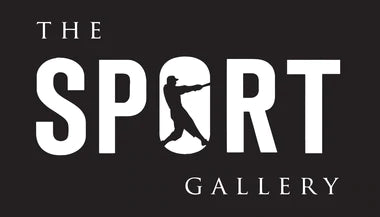By now, many people know of the All-American Girls Professional Baseball League (AAGPBL) thanks to the popular 1992 film, A League of Their Own. If you don't, the story is this: World War II ravaged Major League Baseball's rosters as it did to factories, so in order to keep the game going in some capacity, one team owner, the Cubs' Phillip K. Wrigley, decided to get creative. Women from across North America were recruited or tried out, teams formed, and the AAGPBL was born.
The league, which ran from 1943 to '55, was an amazing achievement for women's professional sport; most players earned more than the average worker, and as many as 910,000 fans attended in a single season. The quality of play, the rules of which evolved from quasi-softball to fully-fledged baseball, was quite high. This was the real deal.

(It is also worth noting, however, that there were still many issues typical of the era, and of male-dominated industries. AAGPBL players did not wear pants like their male counterparts, but instead were made to don short skirts. They were taught "proper etiquette" during spring training and received "beauty kits." The league was also unofficially segregated, so athletes of colour were overlooked.)
The AAGPBL was based in the American Midwest, but one in ten players were from Canada, including one of the primary faces of the league, Mary "Bonnie" Baker. Born and raised in Regina, Baker won a provincial softball championship in 1940, and was actually sought out by scout Hub Bishop, the man who snagged Gordie Howe for the Red Wings.

Baker played in nine of the AAGPBL's 12 seasons, most of them as catcher for the South Bend Blue Sox. In 1950, she served as player/manager for the Kalamazoo Lassies, becoming the only woman in league history to lead a team. By the end of her AAGPBL career, Baker had played in 930 games, registering 255 RBIs and a whopping 506 steals; she was widely seen as the best defensive catcher in the league, as well, and finished with a .965 fielding percentage.
The best – and/or most conventionally attractive – players in the league received a fair amount of publicity. Baker was quite popular; she featured in major pieces by SPORT and Life magazines, and on television. You can still find her appearance on the gameshow What's My Line? thanks to YouTube, which is a prime example of the reach AAGPBL players had, but also the clear misogyny they were subjected to.

After the 1950 season, Baker took leave from the AAGPBL to have a child, but returned for one final go in '52. She then moved back to Canada permanently, becoming a successful softball player once more – batting .500 in the World Ladies Softball final – and also the manager of the Wheat City Curling Club in Regina, a position Baker held for 25 years.
In late 1964, Baker was hired as sports director of local radio station CKRM, which was then, and still is, the flagship station for the Saskatchewan Roughriders. Covering a 'Riders press conference, she became Canada's first female sportscaster, and was introduced as such to a group of all-male reporters. “I’ve been on radio and television many times before, but it’s always me who was being interviewed,” she said. “I’ve never been the interviewer.”
It wasn't until the release of A League of Their Own, however, that Baker and her AAGBPL colleagues became more widely known and started to gain their legend status. In the film, Geena Davis' character, determined catcher Dottie Hinson, is said to be largely based on Baker. More tributes came; a mural was painted in Regina's Central Park, and the softball diamond there was named in her honour. Baker, who passed in 2003, was also inducted into the Canadian Baseball, Saskatchewan Sports, and Canada's Sports Halls of Fame. And her memory lives on at our gallery, too, of course!

